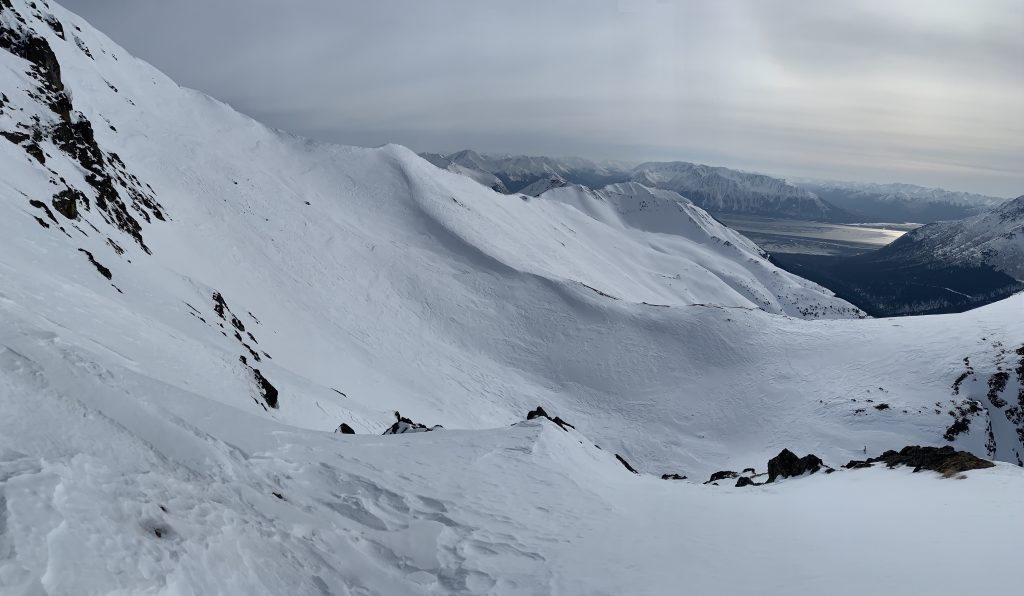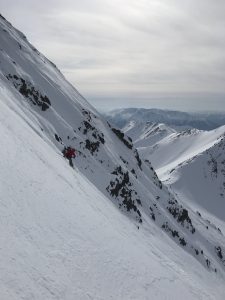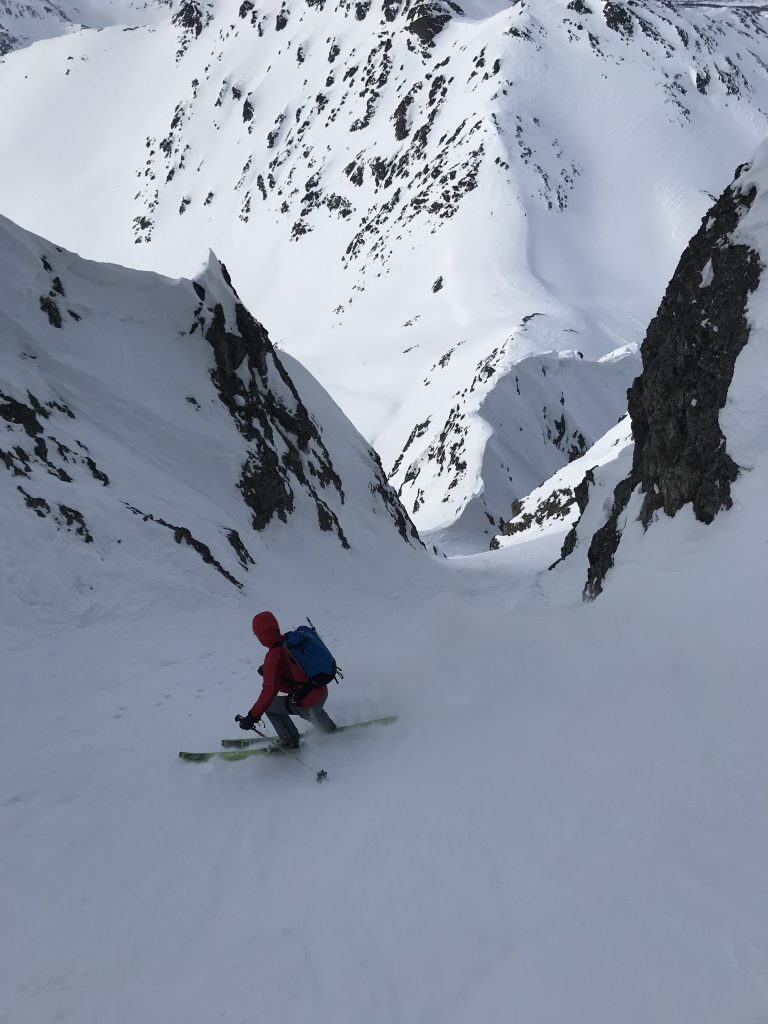On Tuesday, March 24, 2020 Adam Loomis and I (Mat Brunton) completed a direttissima ascent and descent of The Beak’s west face via the Indian Valley trailhead.
Loomis has proven to be a great backcountry partner, especially for proper “character building” missions. Valentine’s Day 2019 he accompanied me on a windy and very cold ascent of South Suicide via its north couloir and northwest face. This was the first time I’d been able to connect the north couloir to the northwest face in ski-able conditions from the summit ridge. We battled very cold and windy conditions, as we struggled to keep frostnip at bay, which greatly added to the intensity of that extremely exposed line.
Fall of 2019 he accompanied me on an ascent of Begich Peak near Portage, during which we scrambled fourth to fifth class mossy and wet choss above the railroad tunnel and crawled through the upper elevations in order get as much surface area flotation through deep early season snow.
Considering the aforementioned, and given that an ascent of The Beak’s west face was more about the objective than snow quality, he was the perfect partner (especially considering his fitness, ability to move FAST in the mountains, and solid head game).
I’d been wanting to climb and ski the west face of The Beak since a winter mission to Bird Country when I first attempted Bird Ridge Overlook’s north face three years ago (see the trip report from BRO’s north face here). With good snow coverage at sea level, a relatively healthy (for recent years) snowpack at Indian Creek Pass, and sufficient avalanche stability; late March 2020 provided the opportunity I’d been waiting for.
Most of the west face of The Beak had avalanched recently enough that I wasn’t concerned about the redevelopment of instabilities. But, considering the line is a huge 2000′ avalanche path and it hadn’t all been affected by the debris from the aforementioned slide, I dug a pit in an unaffected area to further assess stability as the Western Chugach mountains have been plagued by VERY persistent weak layers resulting from heavily faceted snow that formed during a very cold and dry month of January 2020. The pit was reassuring and combined with the still somewhat visible debris (indicating much of the path had slid somewhat recently), we boogied up the west face direttissima with our only real concern being warming of this solar aspect.
Based on satellite imagery and prior photo research I wasn’t quite sure how the upper face (the crux) would provide egress to the summit. We were quite pleased to find a (climber’s) left-to-right trending ramp on the upper face that brought us directly to the summit. However, it was a real struggle to get through this section.
From satellite imagery and past seasons’ photos, I didn’t even know this ramp existed (as it must not fill in every season). This spring it was filled in, but only superficially which resulted in some serious wallowing through 50º+ terrain that consisted of recycled (faceted) powder over basal facets (so heavily faceted that the chains were some of the most impressive I’ve ever seen) and very large depth hoar.
Climbing ~100′ of this very “rotten” snow took about as long as ~1500′ below it. In order to avoid more of this, and considering how steep the rotten snow was getting, we opted to scramble up a 4th to low 5th class rock band (complete with a fun, short chimney section) to wind-packed and supportable snow just shy of and directly below the summit.
Since our route up the rocks to the summit wasn’t ski-able, we climbed the knife-edge ridge from the summit a very short distance to the south to where we could downclimb beneath a cornice and rock outcrop to the top of the aforementioned ramp that was our ski descent egress.
The ramp provided decent turns through recycled powder, but the rest of the west face was “slide-for-life” wind-packed snow and melt-freeze/sun crust. Fortunately, none of it was breakable. While the boilerplate wind-packed snow was sastrugi-ed in places, there were smooth (albeit in places very slick) passages to weave our way down the west face. All said, the turns were engaging and “brought the zen on” more than boring powder.
With plenty of time left in the day, we then climbed and skied the most “reliable” north couloir on Bird Ridge Overlook. A short climb up and over the pass between Indian Creek and the eastern headwaters lake of Ship Creek (that’s north of BRO), and we were ripping back to the trailhead on windboard, “pre-corn,” and a very luged-out Indian Creek trail.
The west face of The Beak as seen from the pass (that’s NW of Bird Ridge Overlook) between Indian Creek and Ship Creek: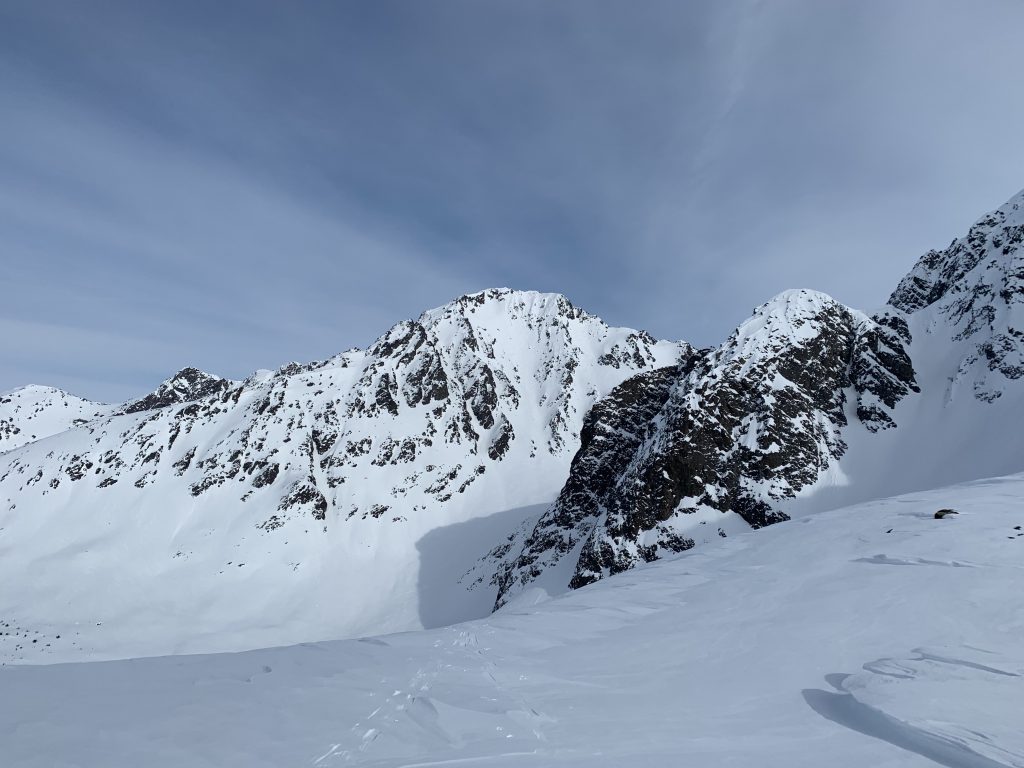
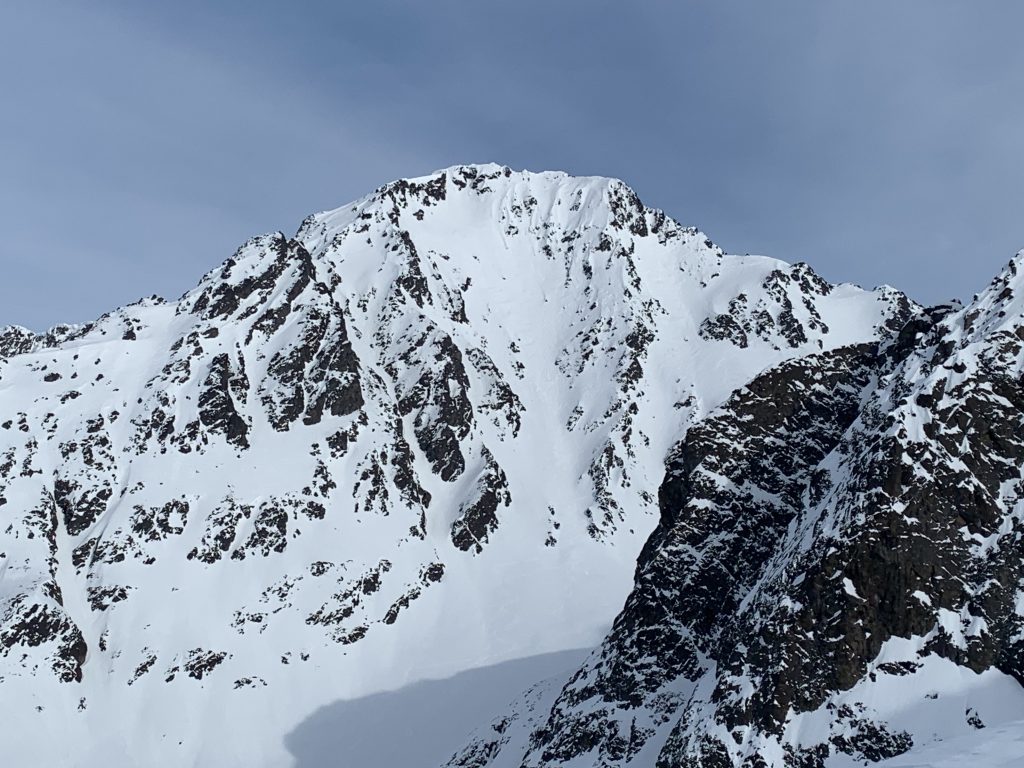
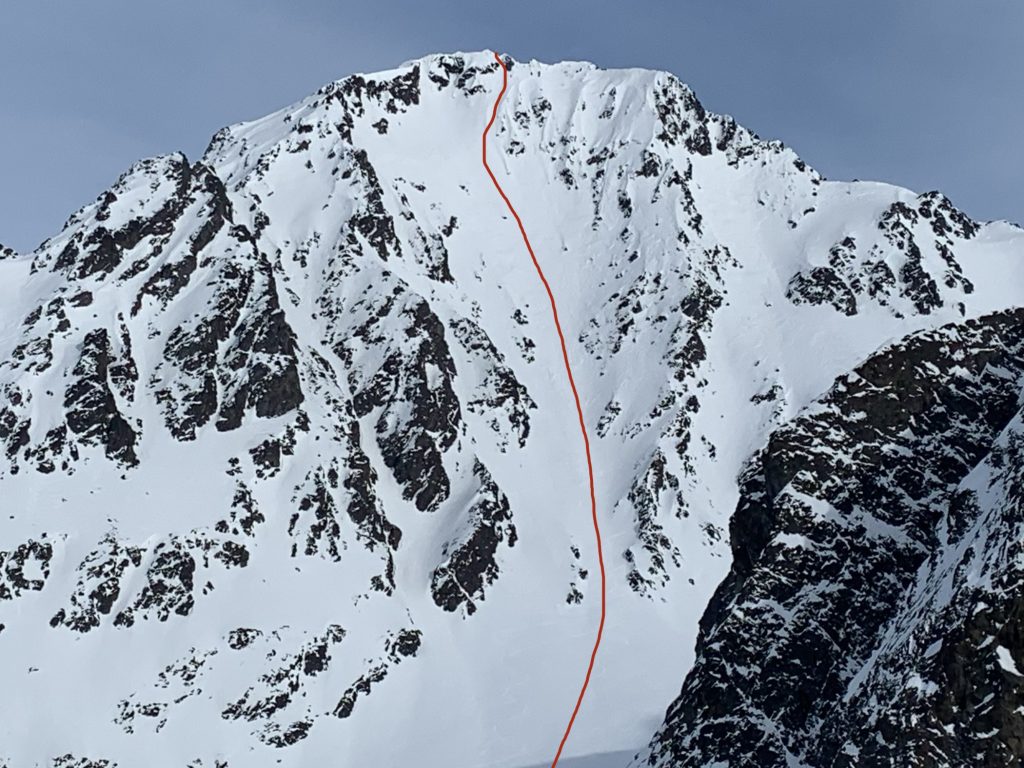
Adam on the exposed, knife-edge ridge just south of the precipitous summit: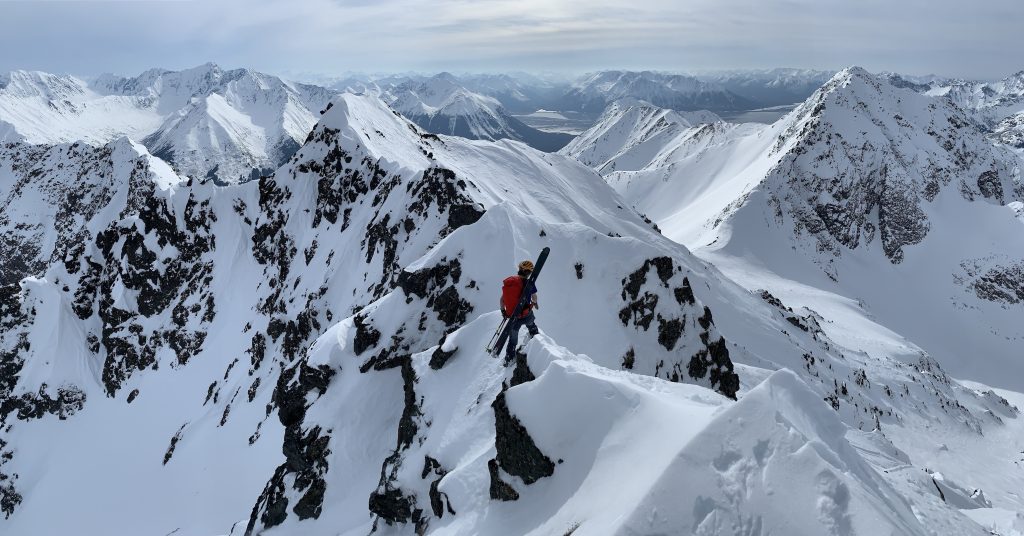
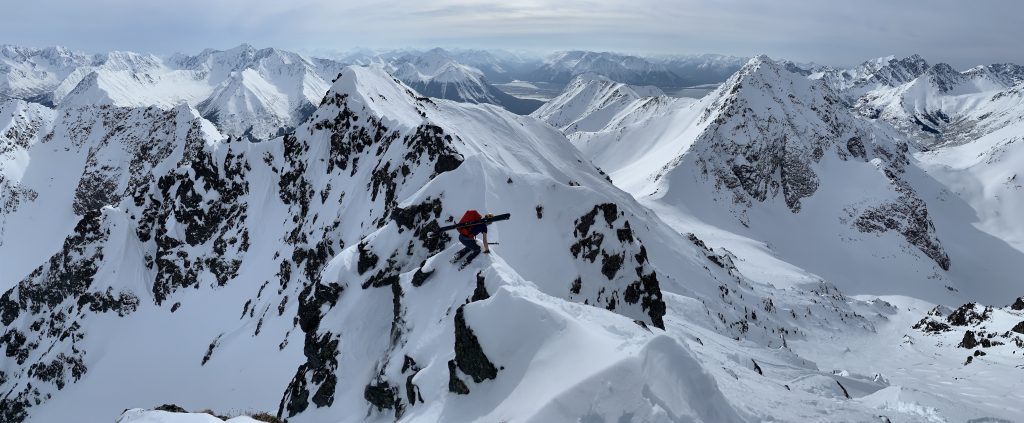
Looking down the west face from the summit: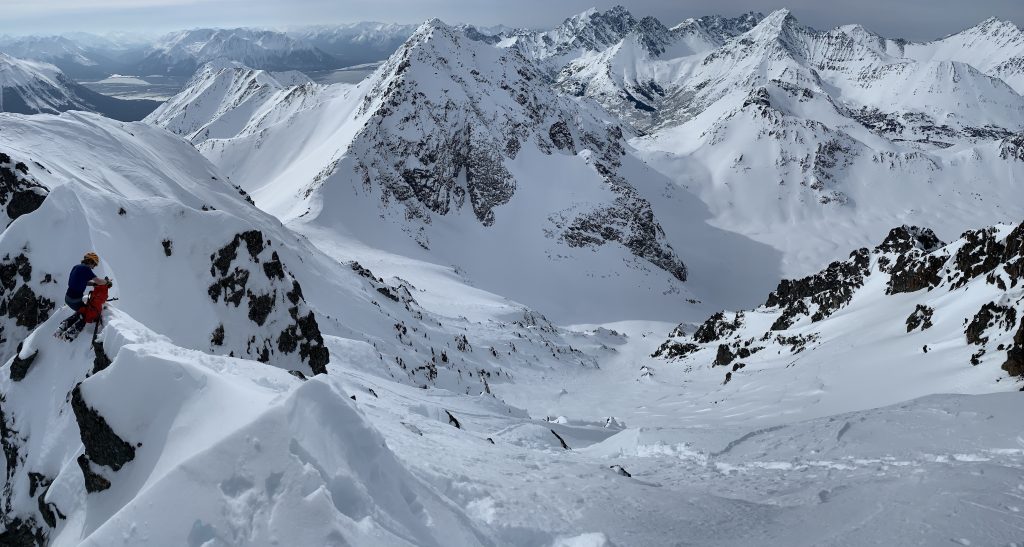
Adam about to descend the west face:
Mat descending the west face:
Looking north from the top of a couloir west of the summit of BRO: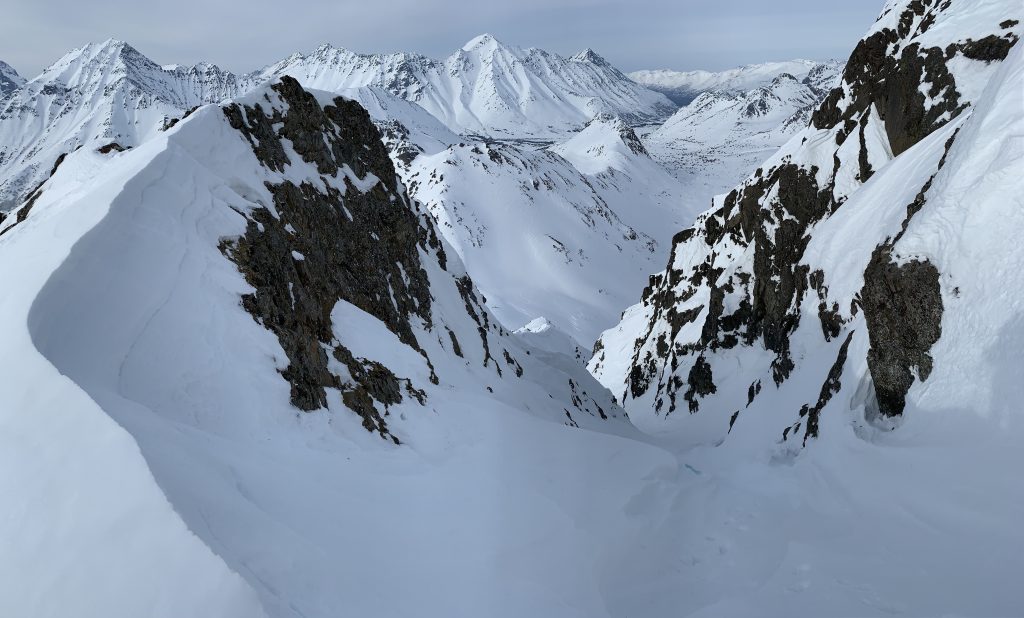
Looking south at Turnagain Arm (and Kenai Mountains on far side of Arm) from the top of the same couloir: